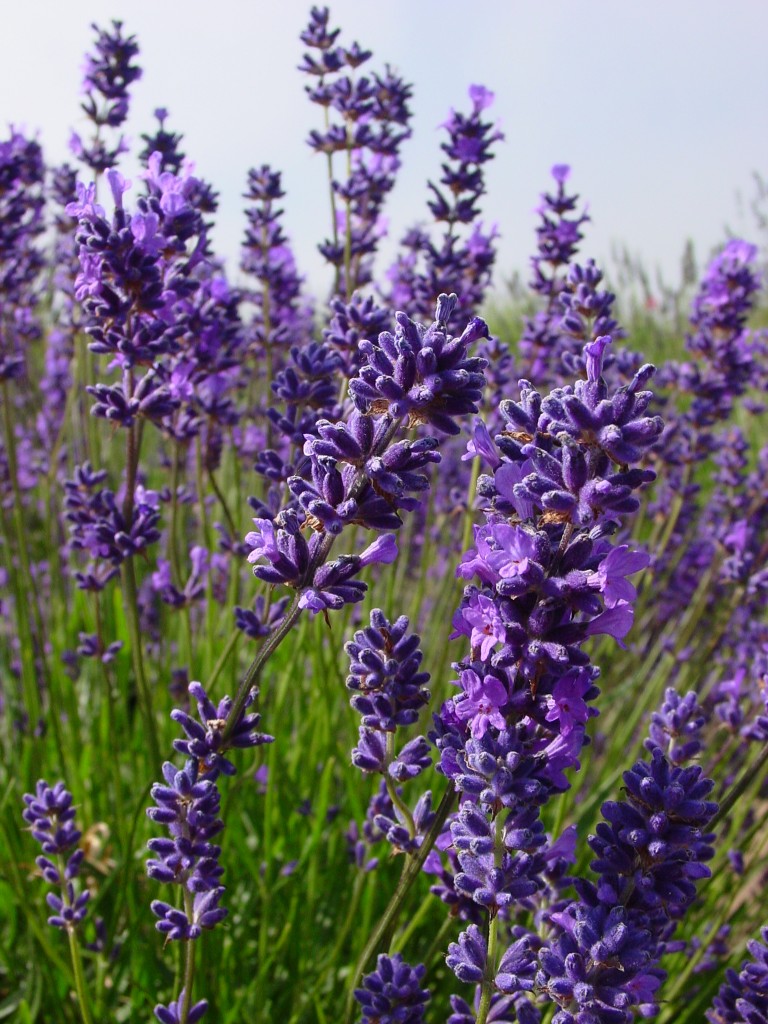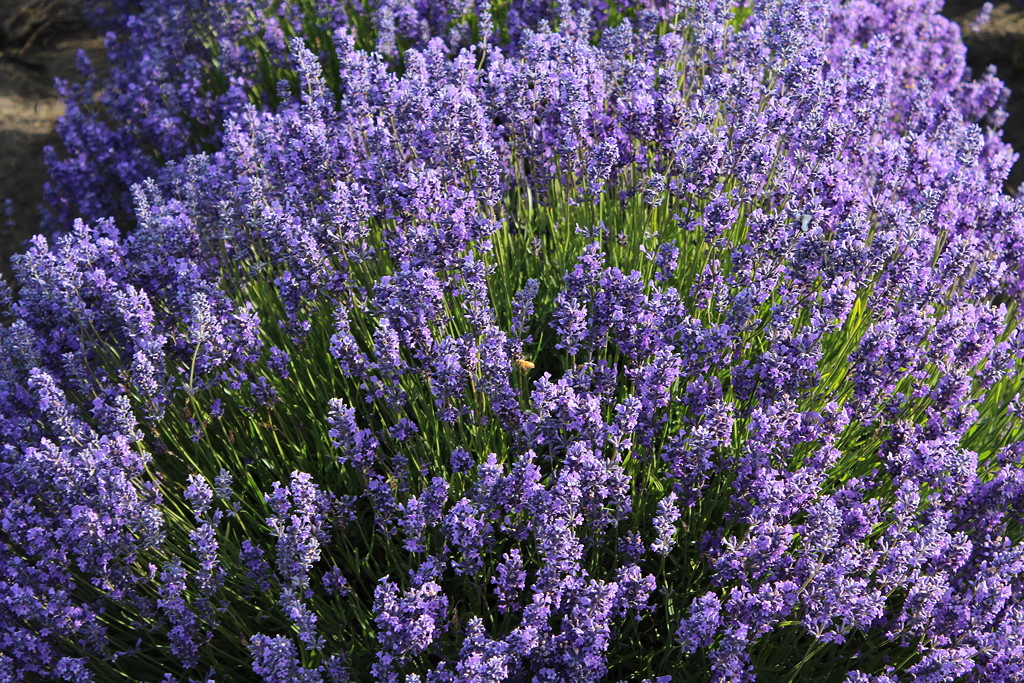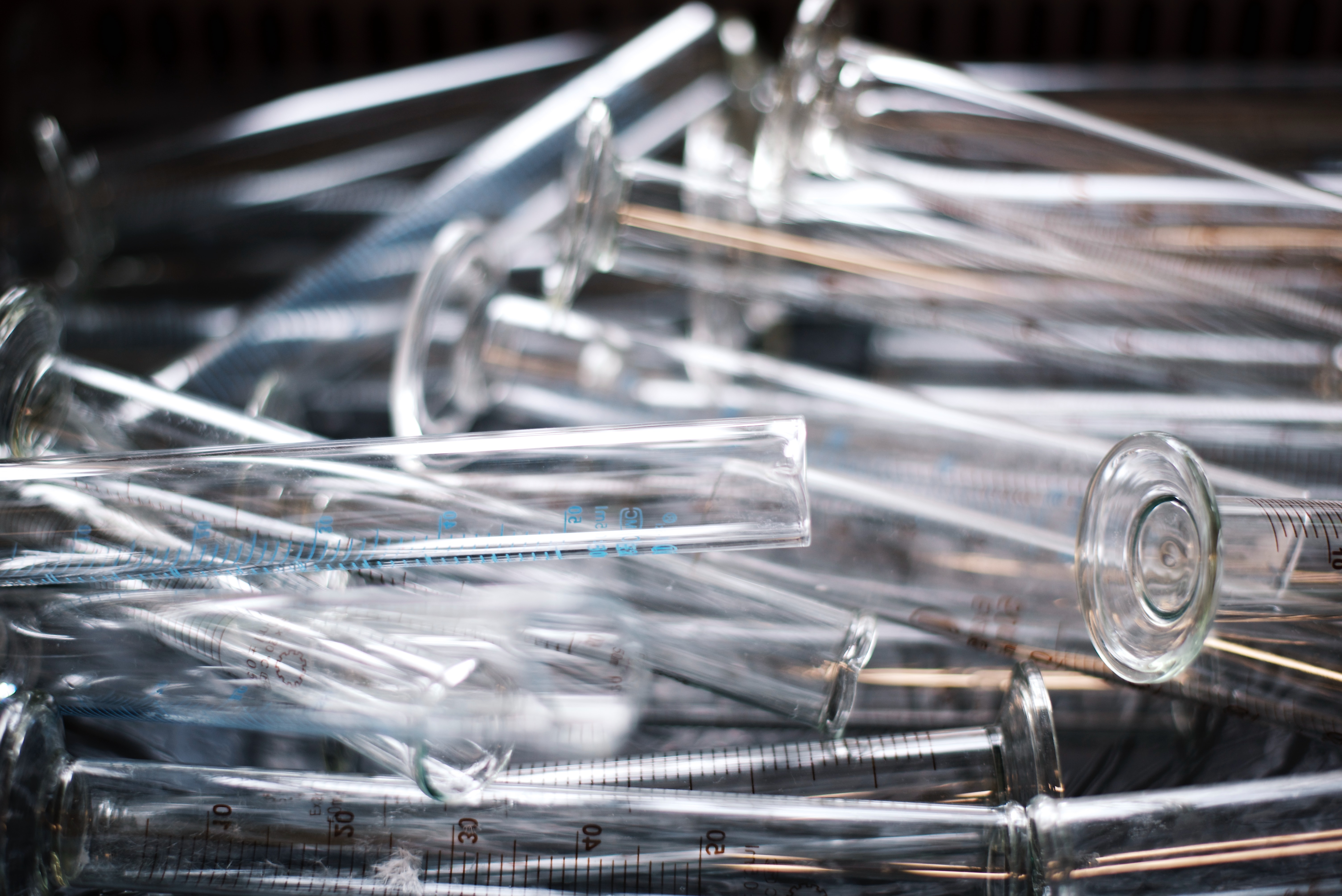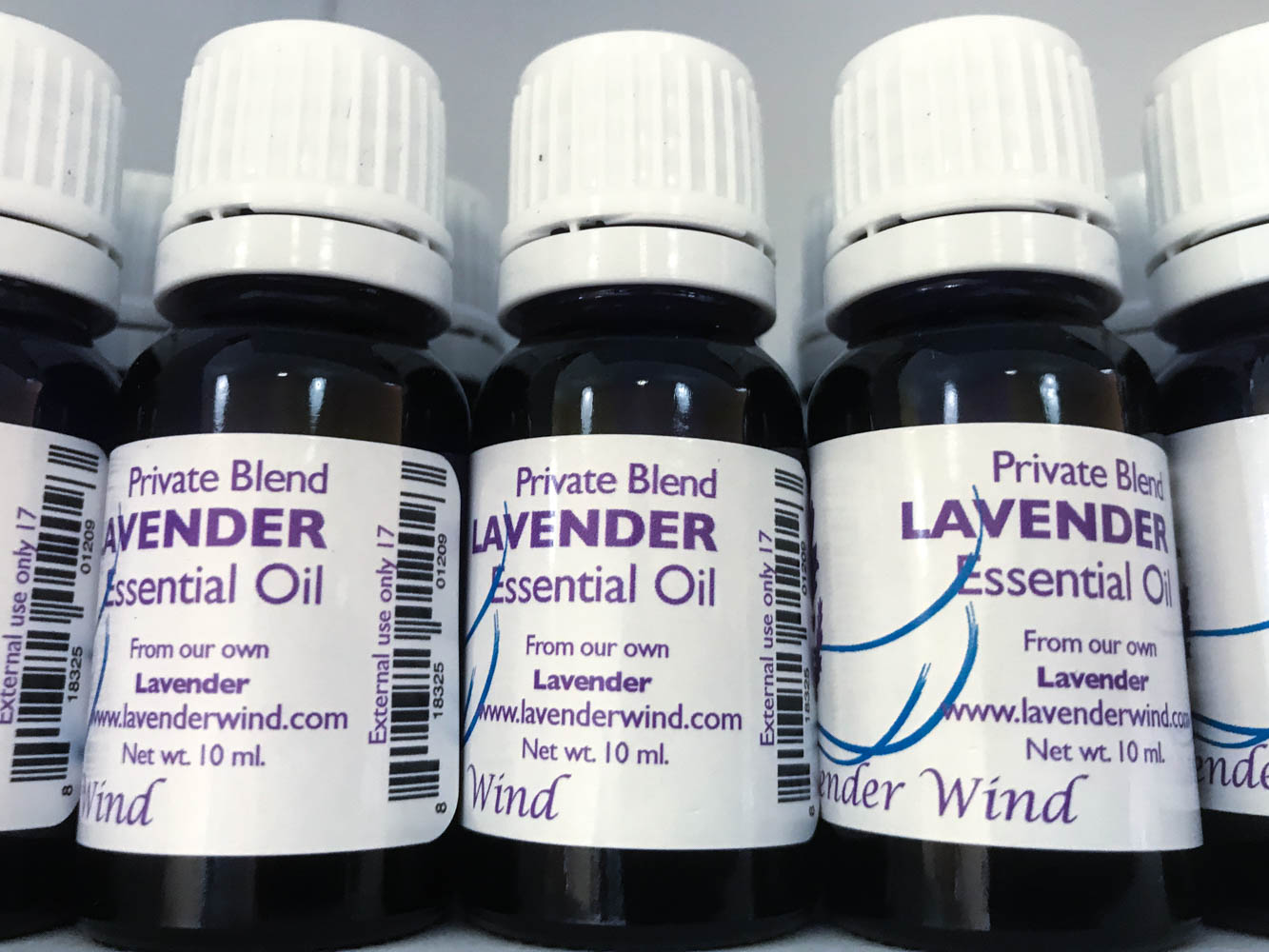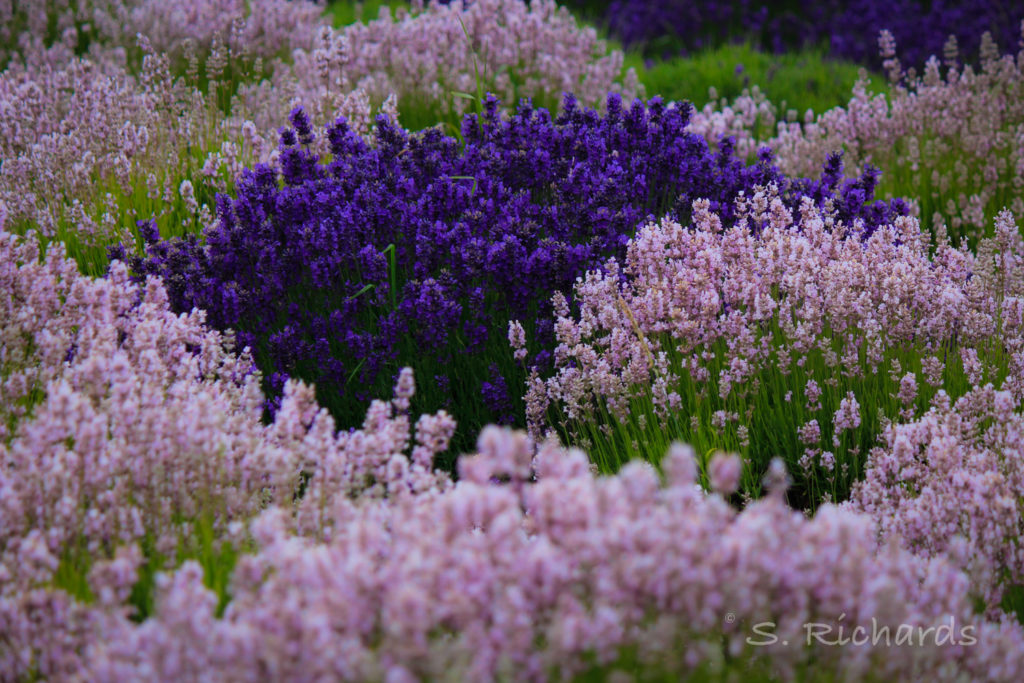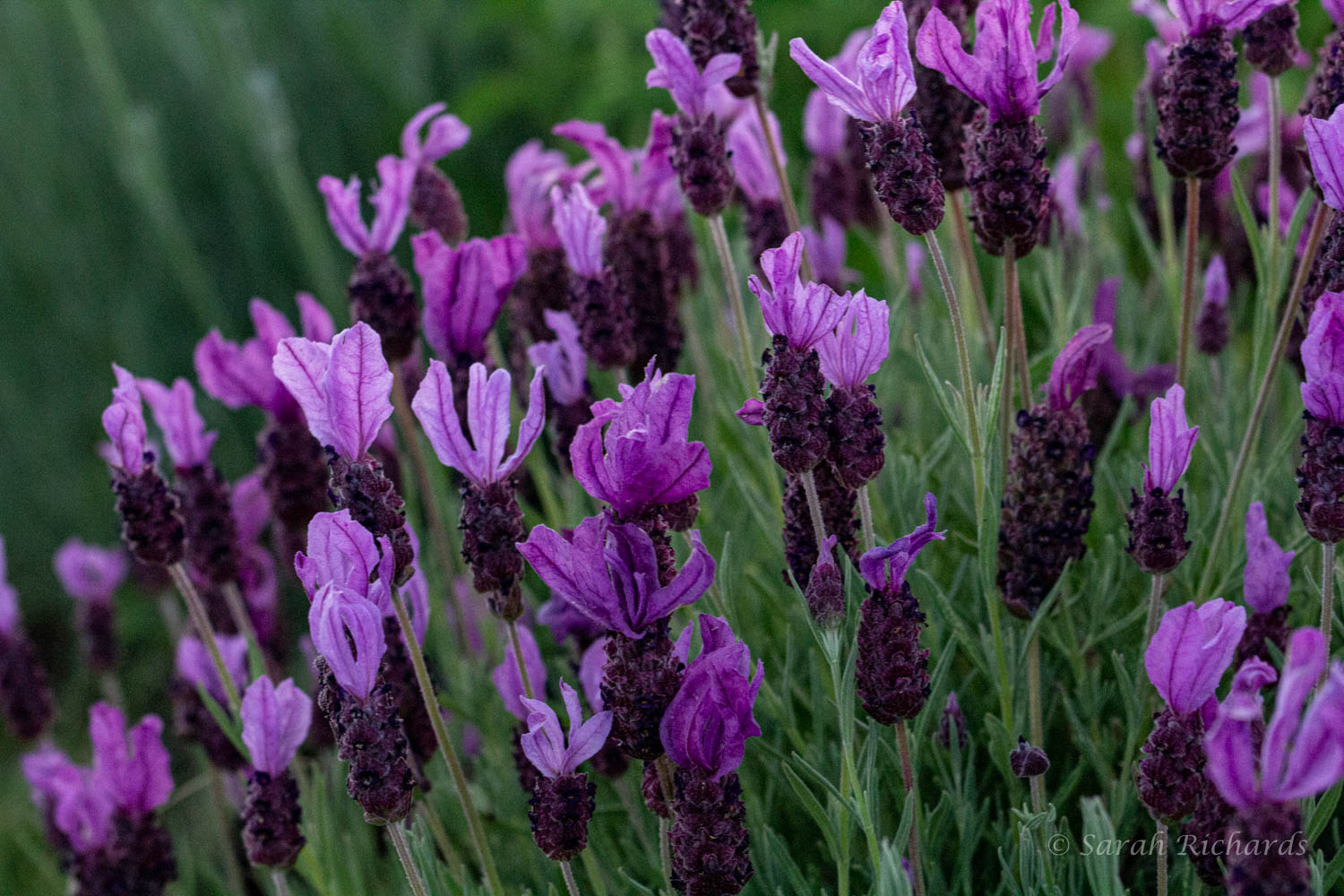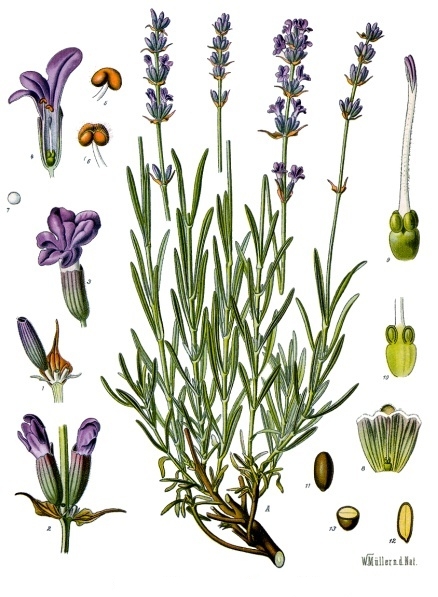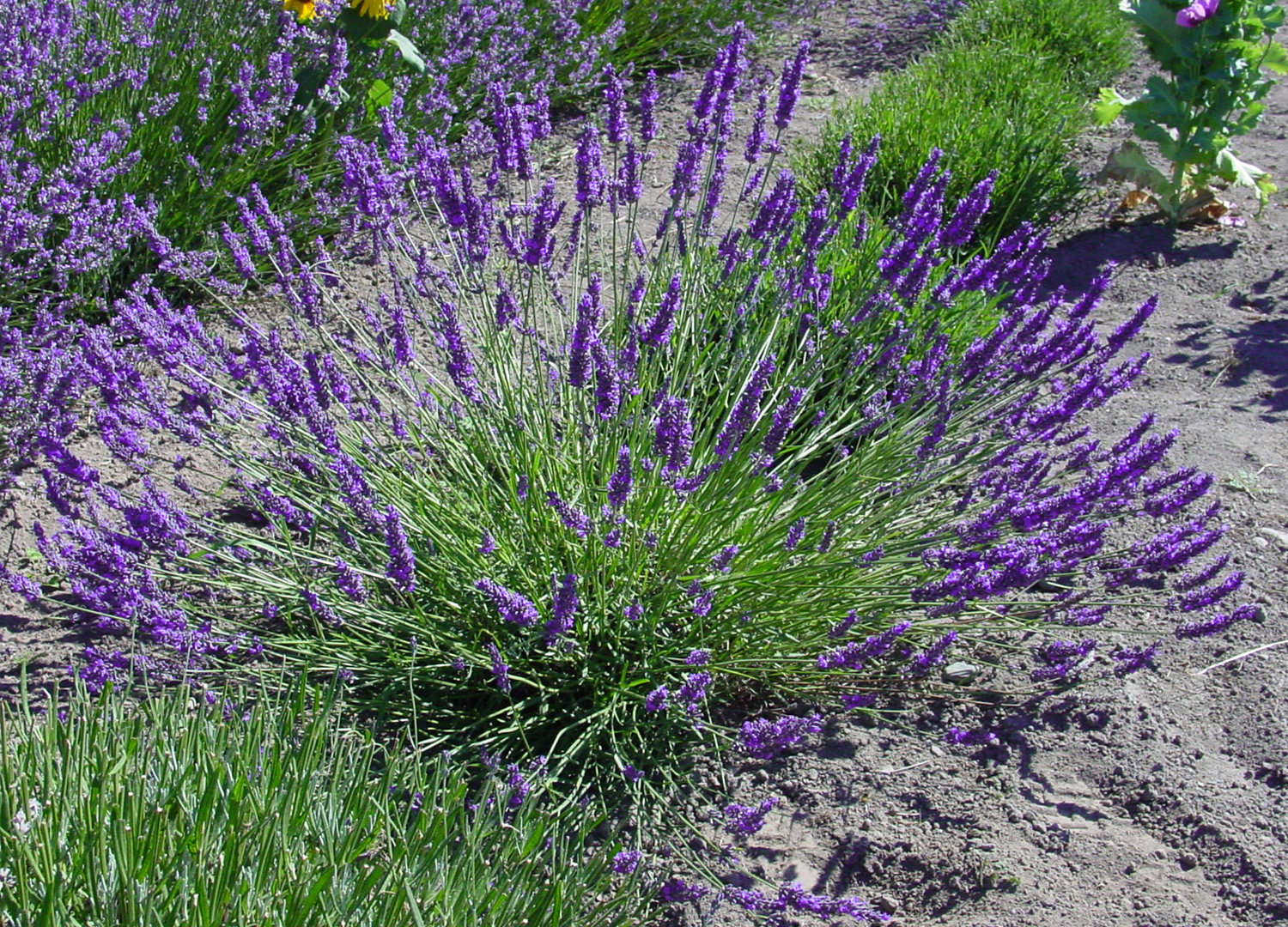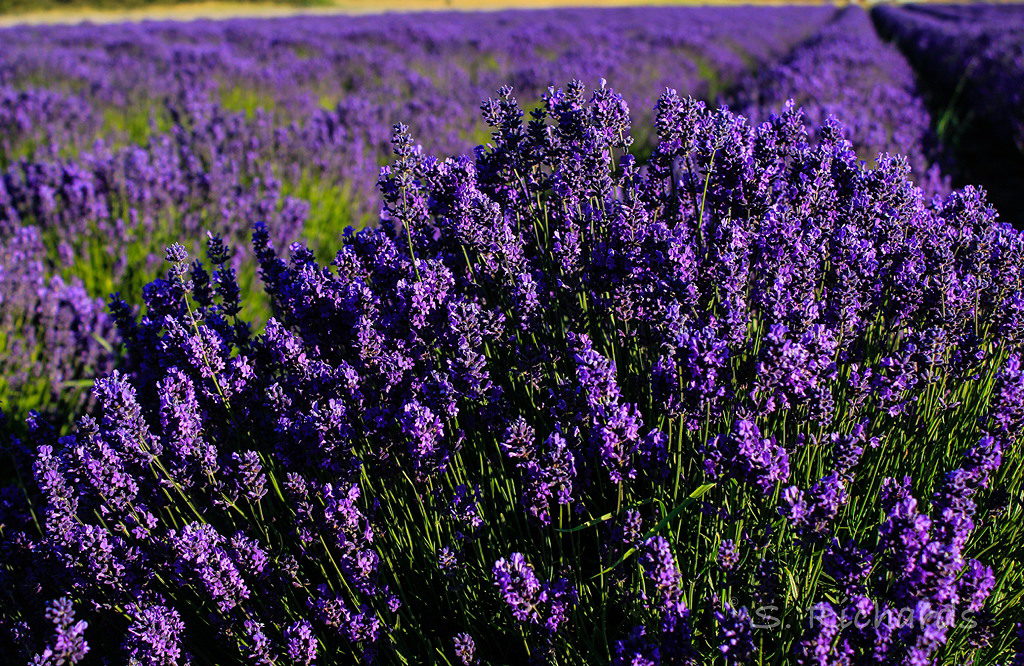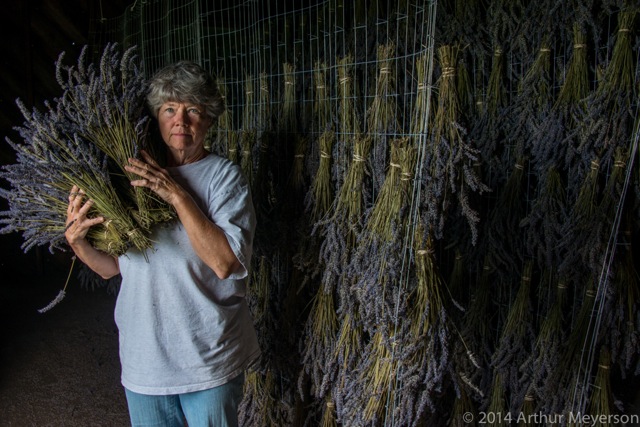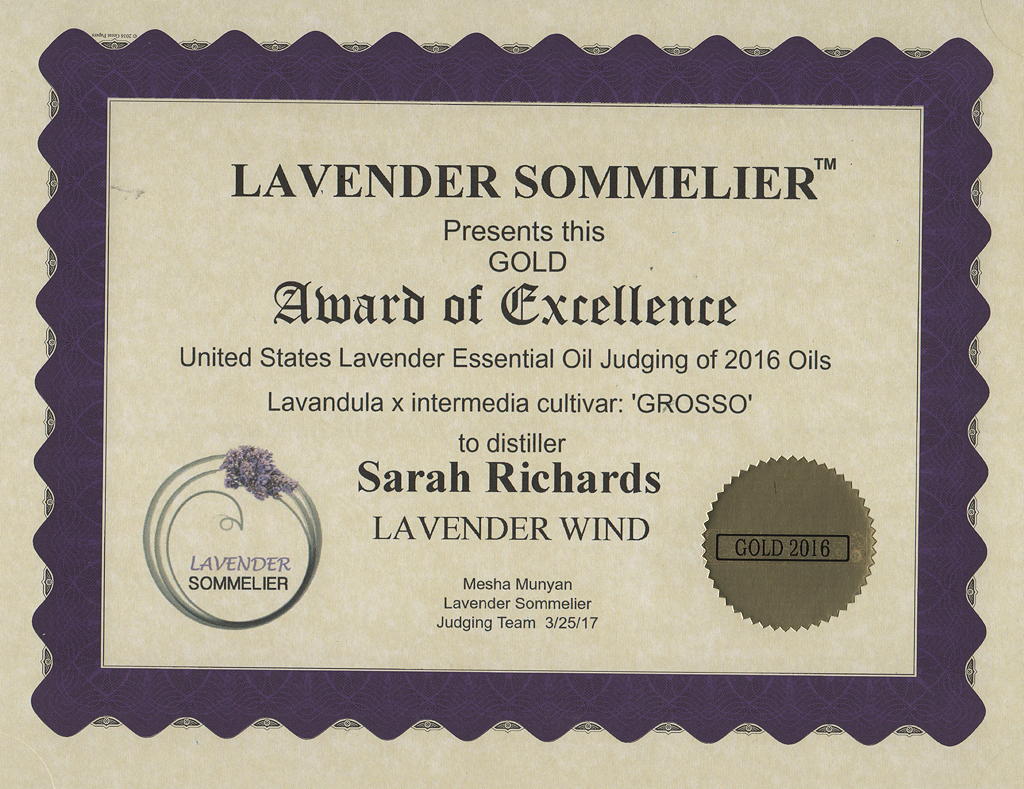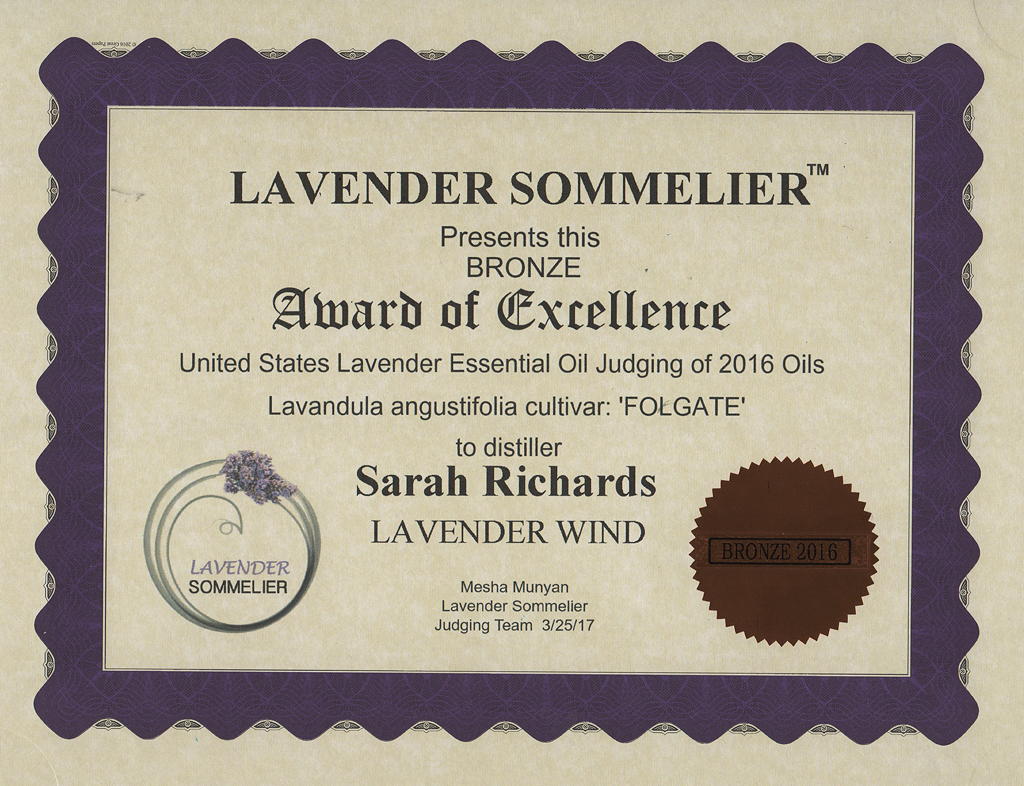by Georgie Smith and Sarah Richards
What is Lavender Hydrosol?
How is it different than Lavender Essential Oil? A lot of lavender fans ask us, so what IS the difference between lavender oil and lavender hydrosol?
There’s a big hint right in their names. Hydro… Oil… Can you guess?
That’s right — water versus oil is main difference between lavender oil and lavender hydrosol. The first being ‘oil soluble’ and the second being ‘water soluble.’
Water is such an important part of hydrosols (which can be made from almost all distilled oil products) that a historic name for them is “flower water” or “floral water.”
Although, ‘floral waters’ is also a name used interchangeably for less rigorous production methods of a water-based aromatic. Simply soaking blossoms in water can create a lightly aromatic ‘water.’ Versus hydrosols, which are made via a steam distillation process.
Making Lavender Hydrosol
In the modern-day aromatherapy movement, hydrosols were a typically discarded by-product in the distilling process in favor of the more potent essential oil. For every few ounces of concentrated, pure essential oil created in distillation, there are also several large jugs worth of ‘essential water.’
That all changed, however, as aromatherapists and professionals began to understand the benefits offered by hydrosols themselves, particularly lavender hydrosol.
The process of steam distillation uses steam and heat to release lavender’s ‘essential’ components.
The process starts with the flowers, leaves and stem of lavender placed into a distillery chamber. Hot steam is put through the plant material and causes the plant to degrade and open up. The water molecules in steam pick up the plant’s constituents, forming a hot distillate that rises to the top of the still as steam. That condenses into liquid and runs into a separator.
Then, the layer of essential oil is skimmed off the top and preserved. What is left is the lavender hydrosol.
Lavender Hydrosol has Different Components than Lavender Essential Oil
Though they are made from the same process, hydrosols and essential oils also are comprised of different components.
Hydrosols contain constituents from the plant that dissolve in water. Essential oils are the constituents that dissolve in oil.
Hydrosol, which contains many of the herbaceous elements of the origin plant that essential oils do not, often are considered to have a ‘greener’ aroma than essential oil.
Lavender essential oil tends to have a sweeter aroma than the hydrosol from the same plant which some find more refreshing.
Why Use Lavender Hydrosol versus Lavender Essential Oil
Less concentrated is a not necessarily a bad thing.
After all the power of essential oils IS that they are so powerful (for instance, they are solvents which means they can dissolve oil-based paints)!
Hydrosols, and in particular lavender hydrosols, work in many (but not all) applications that essential oil does. They just do it in smaller, safer doses.
Because hydrosols are water soluble, they dissolve easily in water-based applications – like baths. Versus essential oils, which will float on top of water, not dissolve. In addition, therapists often will recommend applications of essential oils be applied (sparingly) into a ‘carrier oil’ first to dilute the effects.
Hydrosols, on the other hand, are a simpler, and safer way to venture into using aromatherapy and often recommended as the ‘first choice’ when experimenting with the effects of essential oils. This makes them safer for home and non-professional use and even aromatherapy professionals will often choose hydrosols as the first method in their treatments.
Lavender hydrosol can also be a way to get that “lavender” effect at a greatly reduced price as compared to the essential oil. Hydrosol is diluted by nature, and no need to further water down or mix with other agents.
Ways to Use Lavender Hydrosol
Minor Wound or Abrasion Care
While western medicine hasn’t taken hydrosols very seriously they are reported to have positive impacts on small wounds. Europeans traditionally keep a small bottle of lavender essential oil in their kitchens. Lavender hydrosol can be effective for rinsing, cleaning and promoting healing of skin abrasions and cuts.
Skin Itchiness from Sun or Wind Burns, or Eczema, Dryness and Aging
A refreshing tonic that soothes skin itchiness. Also works for diaper rash!
Skin Toner
Many people use lavender and other hydrosols to create a refreshing skin toner that is rejuvenating and rehydrating. Or add it to your homemade skin care creams for added benefits.
Baths and Showers
Lavender hydrosol can be added to bathwater (like lavender essential oil), with many of the same effects, providing a relaxing floral experience. Or use as a body spritz in the shower!
For General Household Cleaning including Windows
A mild disinfectant, lavender hydrosol is great for all hard surfaces. It is also non-streaking and does a terrific job cleaning windows, glass and computer and TV screens. Some drivers put it in their car’s window washing reservoir so every time they squirt their windshields they get a whiff of lavender and clean glass.
For Washing Fruit and Vegetables
Lavender hydrosol is a perfectly safe product to use on fresh fruit and vegetables.
Keeping Insects at bay
Lavender hydrosol is well-known for discouraging common insects include flies, fruit flies, spiders and ants in common areas like counters, sinks and garbage cans.
Plant Spray
Use lavender hydrosol on both indoor and outdoor plants to discourage aphids and mealy bugs in particular.
But our favorite thing about using lavender hydrosol – it smells GREAT. (Obvious we know, but so true!).
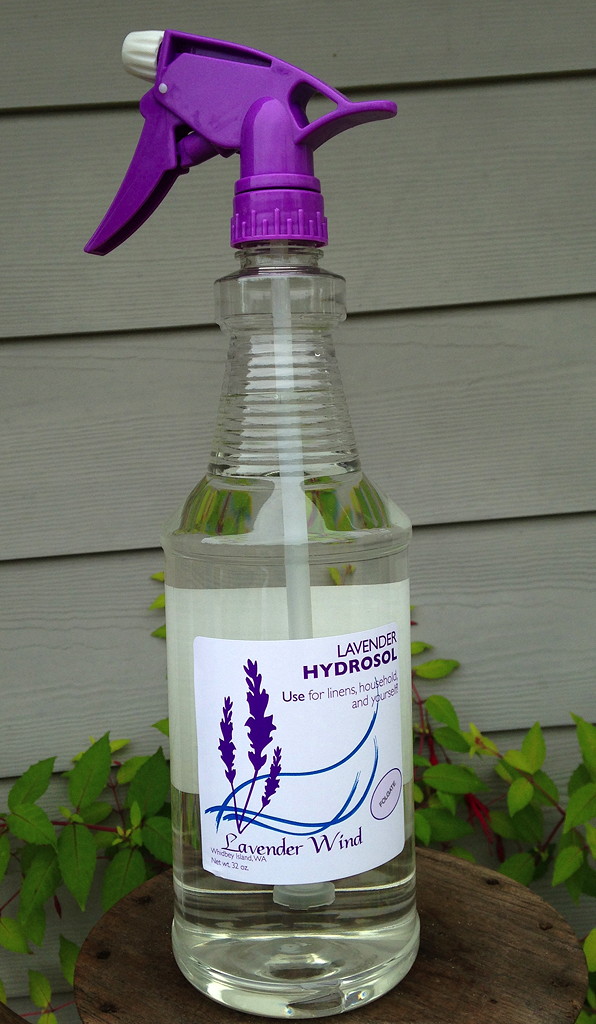
Check out Lavender Wind Farm’s selection of Lavender hydrosol products HERE.
P.S. We will soon have catnip and rosemary hydrosols available, so keep checking, sign up for our emails, or like our facebook page.
Learn more
Want to make your own hydrosols? Ann Harman’s book (Harvest to Hydrosol) is the best, but it’s hard to find as of this writing. Here is a podcast with Anne.
More info on Using Hydrosols at AromaWeb.
For aromatherapy resources the National Association for Holistic Aromatherapy is a good place to start.
If you want to further your education in a formal setting, Bastyr University in Seattle, WA has an Herbal Sciences program
A great resource for information on herbs in general is The American Botanical Council


